
Math Scales for ND MATH Standards prioritized by ND K grade teachers.
- Subject:
- Mathematics
- Material Type:
- Assessment
- Date Added:
- 05/15/2019

Math Scales for ND MATH Standards prioritized by ND K grade teachers.
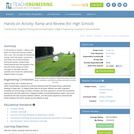
In this hands-on activity rolling a ball down an incline and having it collide into a cup the concepts of mechanical energy, work and power, momentum, and friction are all demonstrated. During the activity, students take measurements and use equations that describe these energy of motion concepts to calculate unknown variables and review the relationships between these concepts.
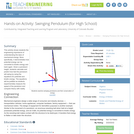
This activity shows students the engineering importance of understanding the laws of mechanical energy. More specifically, it demonstrates how potential energy can be converted to kinetic energy and back again. Given a pendulum height, students calculate and predict how fast the pendulum will swing by using the equations for potential and kinetic energy. The equations will be justified as students experimentally measure the speed of the pendulum and compare theory with reality.
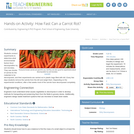
Students conduct experiments to determine what environmental factors favor decomposition by soil microbes. They use chunks of carrots for the materials to be decomposed, and their experiments are carried out in plastic bags filled with dirt. Every few days students remove the carrots from the dirt and weigh them. Depending on the experimental conditions, after a few weeks most of the carrots have decomposed completely.
![OREGON MATH STANDARDS (2021): [2.OA]](https://img.oercommons.org/160x134/oercommons/media/courseware/lesson/image/13138_ODE_Math_Logo_2018-H_color_BvjqVNy.png)
The intent of clarifying statements is to provide additional guidance for educators to communicate the intent of the standard to support the future development of curricular resources and assessments aligned to the 2021 math standards. Clarifying statements can be in the form of succinct sentences or paragraphs that attend to one of four types of clarifications: (1) Student Experiences; (2) Examples; (3) Boundaries; and (4) Connection to Math Practices.
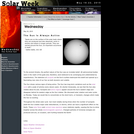
This is a reading associated with activities during Solar Week, a twice-yearly event in March and October during which classrooms are able to interact with scientists studying the Sun. Outside of Solar Week, information, activities, and resources are archived and available online at any time. Learners will read about solar activity, such as sunspots and coronal mass ejections, and the solar cycle. Links to other online resources are included. This activity is scheduled to occur during Wednesday of Solar Week.
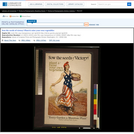
Poster showing Liberty sowing seeds. Text continues: Write to the National War Garden Commission, Washington, D.C., for free books on gardening, canning, & drying. Caption: "Every garden a munition plant" - Charles Lathrop Pack, President.
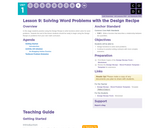
In this stage students practice using the Design Recipe to write functions which solve for word problems. Towards the end of the lesson students should be ready to begin using the Design Recipe on problems from your own math curriculum.
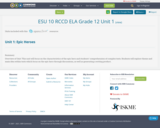
Overview of Unit: This unit will focus on the characteristics of the epic hero and students’ comprehension of complex texts. Students will explore theme and main idea within texts which focus on the epic hero through discussions, as well as generating a writing product.
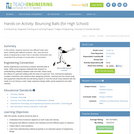
In this activity, students examine how different balls react when colliding with different surfaces. Also, they will have plenty of opportunity to learn how to calculate momentum and understand the principle of conservation of momentum.
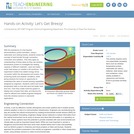
With the assistance of a few teacher demonstrations (online animation, using a radiometer and rubbing hands), students review the concept of heat transfer through convection, conduction and radiation. Then they apply an understanding of these ideas as they use wireless temperature probes to investigate the heating capacity of different materials sand and water under heat lamps (or outside in full sunshine). The experiment models how radiant energy drives convection within the atmosphere and oceans, thus producing winds and weather conditions, while giving students the hands-on opportunity to understand the value of remote-sensing capabilities designed by engineers. Students collect and record temperature data on how fast sand and water heat and cool. Then they create multi-line graphs to display and compare their data, and discuss the need for efficient and reliable engineer-designed tools like wireless sensors in real-world applications.
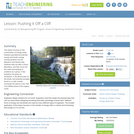
This lesson focuses on the conservation of energy solely between gravitational potential energy and kinetic energy, moving students into the Research and Revise step. Students start out with a virtual laboratory, and then move into the notes and working of problems as a group. A few questions are given as homework. A dry lab focuses on the kinetic and potential energies found on a roller coaster concludes the lesson in the Test Your Mettle phase of the Legacy Cycle.

So many dinosaurs have names that come from Greek or Latin roots. This activity lets kids explore those affixes.
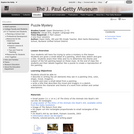
Your students will have fun trying to solve a mystery in this lesson. Students are given a small detail of a painting, which they sketch and then give a title. Students shares their titles and try to determine the theme and subject of the full painting based on these clues. At the end of class the students put their details together like a puzzle to create a class reproduction of the painting.

Explores how sports are and have been represented and expressed in media and literature, including fiction, nonfiction, poetry, and plays. Investigates the ways in which narrative representation engages changing cultural and historical contexts. Focus is on analysis of gender, race, and socioeconomics, along with philosophy, ethics, psychology, and politics in sports literature and media.

SYNOPSIS: This lesson introduces the idea of green spaces to students.
SCIENTIST NOTES: This lesson introduces students to green spaces and how they can be identified and mapped. The read aloud, vocabulary, and external links are thoroughly sourced and written. This lesson has passed our science review.
POSITIVES:
-This lesson creates a collaborative learning environment for students as an introduction to green spaces and how to create more green spaces.
-This lesson features kinesthetic learning if teachers walk with their students around their school.
-Students will develop a strong connection to self and community through the read aloud of Sofia Valdez, Future Prez.
-This lesson features excellent vocabulary development.
ADDITIONAL PREREQUISITES:
-This is lesson 1 of 6 in our 3rd-5th grade Green Spaces unit.
-It is necessary to procure a copy of Sofia Valdez, Future Prez for this lesson.
-Identify the green spaces on your campus on your own before introducing this lesson to your class to make sure that you have accounted for all the green spaces.
DIFFERENTIATION:
-Think-pair-share during read aloud where students can make predictions or answer questions.
-You can pause the read aloud before the text is read for students to make observations and predictions about the story.
-Groups of students with mixed abilities can collaborate on their green spaces map.
-Possible extension: Do a campus tour and have students take notes on green spaces they observe.
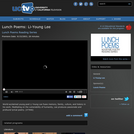
World-acclaimed young poet Li Young Lee fuses memory, family, culture, and history in his work. Meditating on the vulnerability of humanity, Lee produces passionate and profound lyrical poetry. (28 minutes)
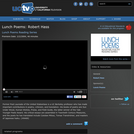
Former Poet Laureate of the United States, Hass is a UC Berkeley professor who has made important contributions in poetry, criticism, and translation. His books of poetry are Sun Under Wood, Human Wishes, Praise, and Field Guide, the latter winner of the Yale Younger Poets Award. His critical essays are assembled in Twentieth Century Pleasures, and the poets he has translated include Czeslaw Milosz, Tomas Transtrmer, and masters of Japanese haiku. (46 minutes)
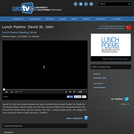
David St. John was widely praised and was a National Book Award finalist for Study for the World's Body. Recent books are The Red Leaves of Night from HarperPerennial and Prism from Arctos Press, and his newest, The Face , a book-length Poems. His image-rich work muses on both ecstasy and loss. (51 minutes)
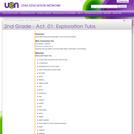
The focus of this lesson is to provide an opportunity for children to develop oral language skills and to record their oral language to share with others.